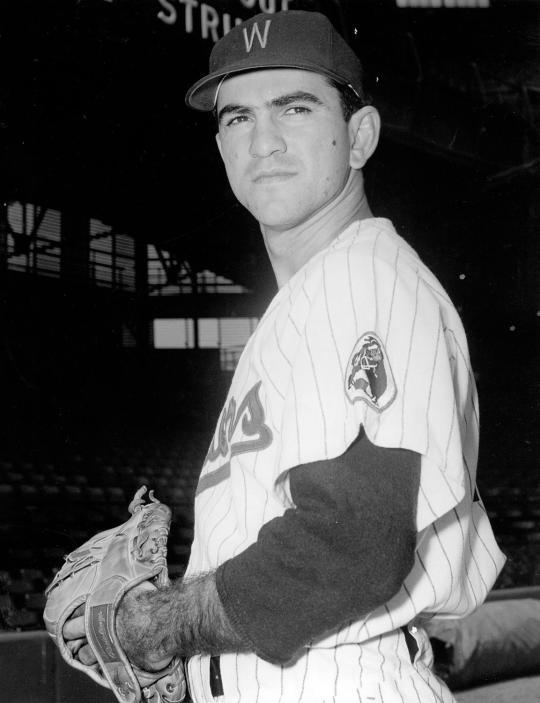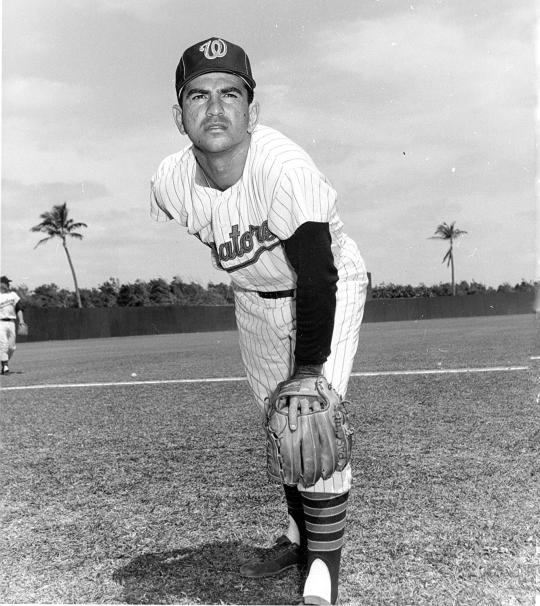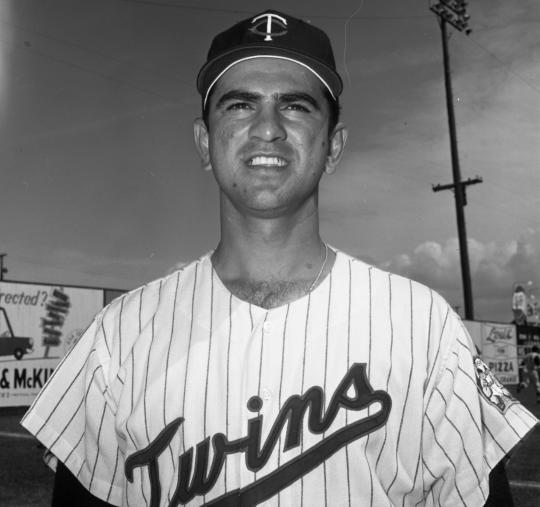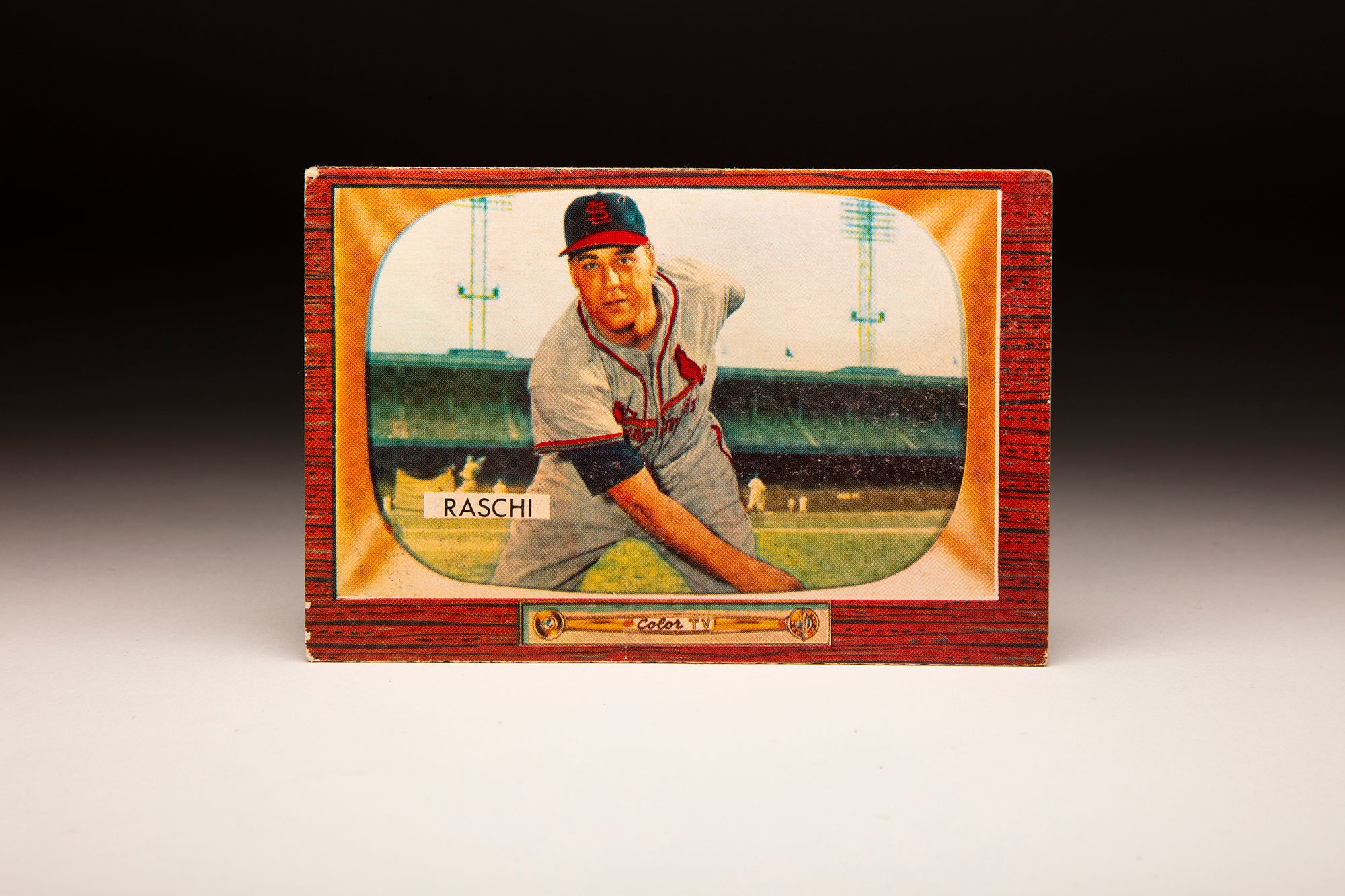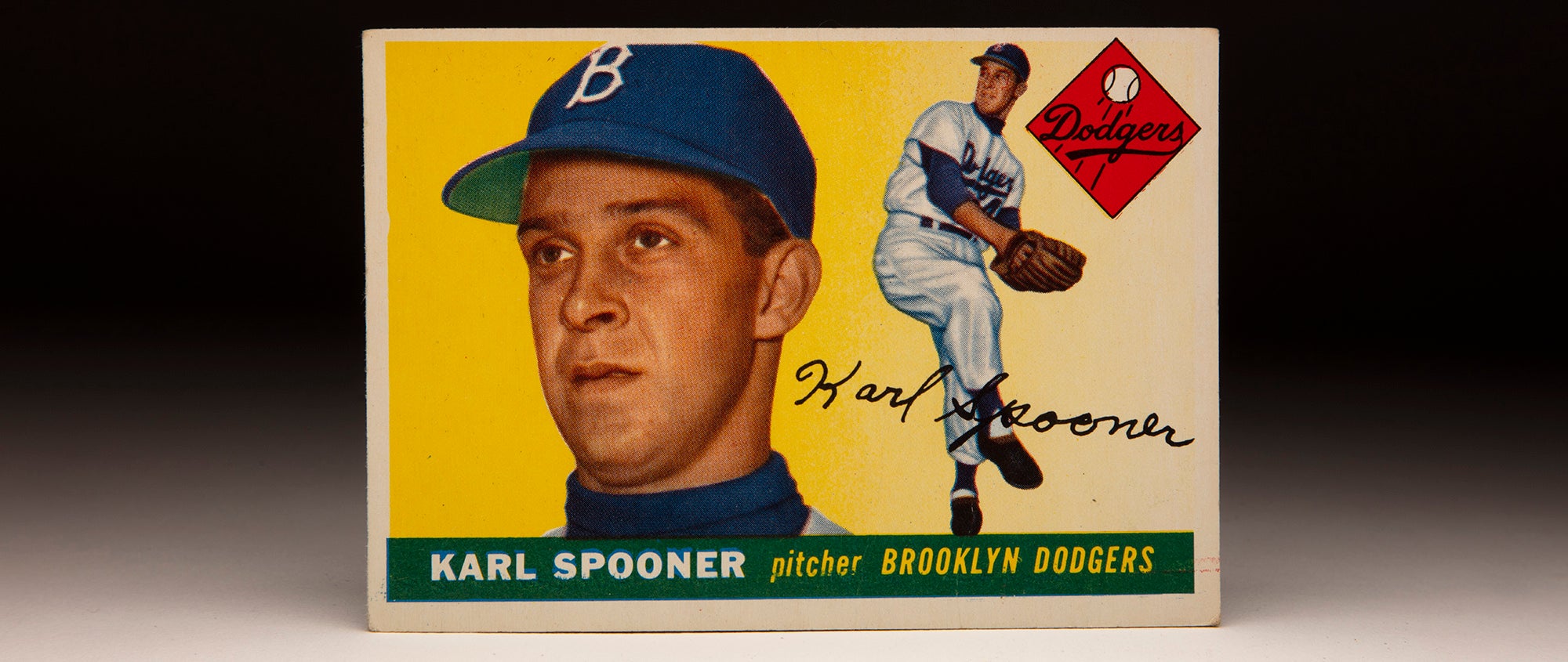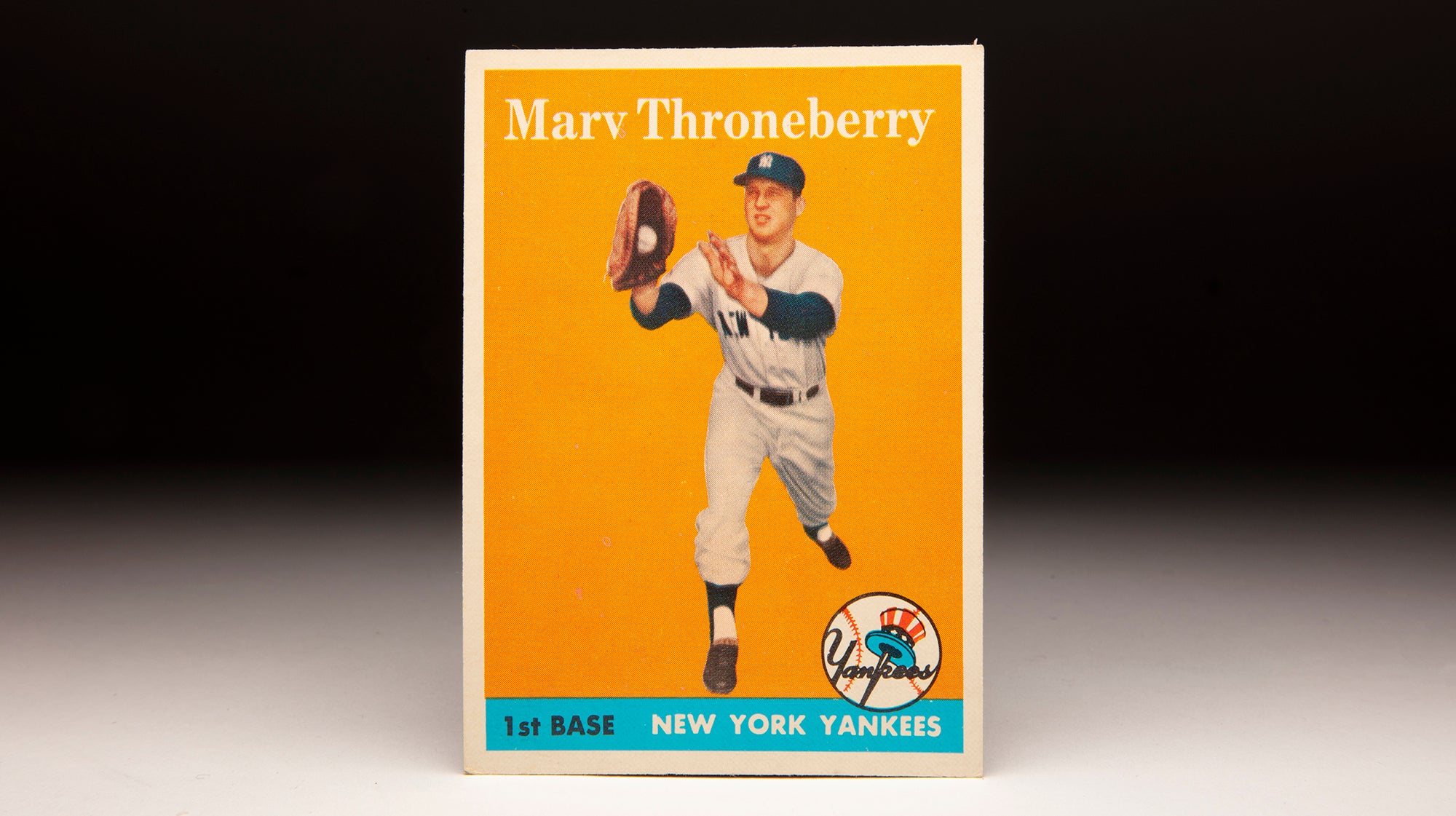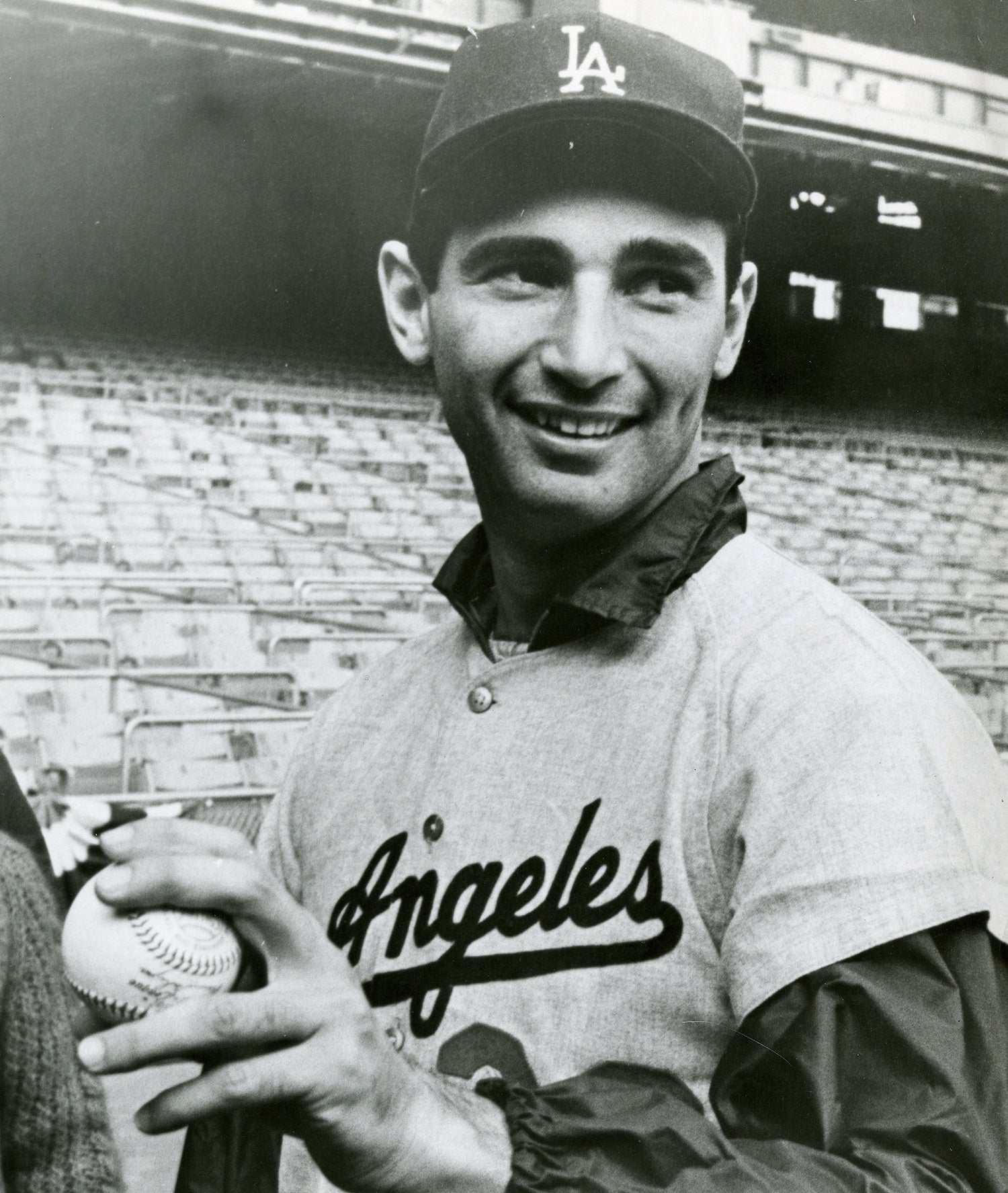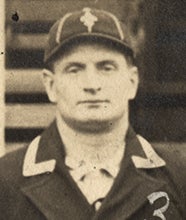- Home
- Our Stories
- #CardCorner: 1955 Topps Camilo Pascual
#CardCorner: 1955 Topps Camilo Pascual
When he pitched his last big league game in 1971, Camilo Pascual had struck out more batters, started more games and thrown more shutouts than any other Cuban-born pitcher in MLB history.
And he did it all after beginning his career with a 28-66 record over five seasons with one of the lowliest teams in American League history.
Born Jan. 20, 1934, in Havana, Pascual was a third baseman during his sandlot days before transitioning to the pitching mound.
“I could always throw curves when I fooled around as a kid,” Pascual told the New York Daily News in 1963 when he was hailed as having one of the game’s top curveballs. “They didn’t think I could hit enough to be a third baseman so they made me pitch.”
Pascual starred as an amateur in Cuba and played in the United States at the Class C and D level in 1951 as a 17 year old. Following that season, legendary Washington Senators scout Joe Cambria signed Pascual to a contract for a reported $125 bonus.
Official Hall of Fame Merchandise
Hall of Fame Members receive 10% off and FREE standard shipping on all Hall of Fame online store purchases.
Working with Dolf Luque – a Cuba native who won 194 big league games from 1914-35 – Pascual developed into a top prospect. By 1954, Pascual was with the Senators.
Washington, however, was entering a stretch that would see the team average more than 94 losses a season (in 154-game campaigns) from 1954-59. Pascual was 4-7 with a 4.22 ERA in 48 games in 1954, then went 2-12 with a 6.14 ERA in 43 games the following year – spending both seasons as a swingman.
He moved into the rotation in 1956, where he struck out 162 batters in 188.2 innings but was 6-18 with a 5.87 ERA while allowing a league-high 33 home runs.
“I had my worst year (1956) when I didn’t pitch in Cuba in the winter,” Pascual said.
Until the Cuban Revolution, Pascual pitched most winters in his homeland and starred for the Cienfuegos team. And though he endured bouts of “dead arm” that was likely due to overuse, Pascual would retire second only to Luque on the all-time innings pitched list among Cubans with 2,930.2. Today, Pascual ranks fourth on that list behind Luis Tiant, Luque and Liván Hernández.
In 1957, Pascual lowered his ERA to 4.10 but went 8-17 for a Senators team that went 55-99. He was 8-12 in 1958, but his 3.15 ERA and American League-leading 7.4 strikeouts per nine innings pitched were an indication of things to come.
With his back-arching windup that nearly scraped his right hand against the pitcher’s mound, Pascual was evolving into a future star.
“I consider him the No. 1 pitcher on our staff,” Senators owner Calvin Griffith reportedly told the Yankees when they inquired into the possibility of acquiring Pascual.
Then in 1959, the 25-year-old Pascual put it all together, posting a 17-10 record, 2.64 ERA and 185 strikeouts to go with league-leading totals in complete games (17) and shutouts (six). He was named to his first All-Star Game that summer and finished 19th in the AL Most Valuable Player Award voting.
Following the season, the Associated Press reported that Cincinnati Reds general manager Gabe Paul offered Griffith $500,000 for Pascual’s contract – on the heels of Paul’s offer of the same amount for the Senators’ Harmon Killebrew.
Griffith turned down both proposals.
Pascual appeared to be on the verge of stardom, but his personal life was in upheaval. He left Cuba soon after Fidel Castro came to power in 1959 and established a home in Miami, leaving behind his home and a reported $30,000 when he fled.
“I was not hard to get out when I did it,” Pascual told the Daily News. “They didn’t care, as long as you didn’t take any money. I lost everything I had. All my money was in banks in Havana, where I lived.”
But the turmoil did not affect Pascual’s pitching. On April 18, 1960, Pascual set a still-standing Opening Day record by striking out 15 Red Sox – allowing only a second-inning home run to Ted Williams (who was one of only two Boston starters who didn’t fan that day) in a 10-1 complete game victory.
Pascual posted double-digit strikeout totals in five of his first eight starts that year, a stretch that also included an 11-inning shutout against Detroit. However, injuries limited him to just 151.2 innings that year as he went 12-8 with a 3.03 ERA.
Following the season, the Senators relocated to Minneapolis as the American League placed an expansion franchise in the nation’s capital. Pascual and a group of talented youngsters established the Twins, who were on their way to heights over the next decade that the Senators rarely approached.
Pascual was a hard-luck 15-16 in 1961, posting a 3.46 ERA and league-leading totals in shutouts (eight) and strikeouts (221). It marked the first time since Walter Johnson in 1916 that a Senators/Twins pitcher had struck out at least 200 batters in one season, and Pascual was just the second pitcher in franchise history to reach the 200-strikeout mark.
Pascual made headlines across the country by blanking the eventual AL champion Yankees 3-0 on Aug. 29 to improve to 12-13.
Pascual also became a first-time father that day – his wife Raquel gave birth to a boy they named Camilo Pascual Jr. – just hours before game time.
“This is the best present I could have given (my wife),” said Pascual after allowing just four hits and striking out Mickey Mantle three times.
Pascual reached the 20-win plateau in 1962, going 20-11 with a 3.32 ERA and leading the league in complete games (18), shutouts (five) and strikeouts (206). He was even better the following year, going 21-9 with a 2.46 ERA, 18 more complete games and 202 strikeouts – again leading the league.
He became the first AL pitcher since Bob Feller in 1946-48 to lead the league in strikeouts three straight years. Only Lefty Grove, Rube Waddell, Feller and Johnson had ever topped the league in strikeouts for three straight seasons before Pascual.
Commensurate with his success, by 1963, Pascual was drawing a salary of $36,500 – the most of any pitcher in Senators/Twins history.
Pascual was also one of the best hitting pitchers of his era, posting a .302 batting average in 1959 and 26 hits and 19 RBI in 1962.
“He’s a tremendous pitcher,” Yankees manager Ralph Houk said in 1963. “He can set up a batter in so many ways. You look for a fastball and that overhand curve gets you. Look for a curve and he jams that fastball on your hands.
“He’s the best pitcher in baseball.”
The Twins, meanwhile, won 91 games in both 1962 and 1963 – the first time since 1930-33 the franchise had posted consecutive 90-win campaigns.
Pascual’s success continued in 1964 even though his record dropped to 15-12. He worked a career-best 267.1 innings, struck out 213 batters and was named to his seventh All-Star Game. But now in his 30s, Pascual would soon become a victim of his workload just as the Twins were set to reach the game’s biggest stage.
Pascual began the 1965 season on fire, going 8-0 with a 2.49 ERA in his first 13 starts through June 8. He worked an incredible 94 innings over the first eight weeks of the season, making eight starts in May alone. But while going 8-0, Pascual recorded just 58 strikeouts.
Pascual worked only 13.2 innings in July and missed the whole month of August following surgery to remove a small tumor and repair torn muscles in his pitching shoulder.
“The pain was worse every inning,” Pascual told the Associated Press after failing to complete the fourth inning against the Senators on July 29.
Pascual returned in September and made six starts down the stretch, striking out 13 Washington batters in a 2-1 complete game loss Sept. 17. He picked up his ninth and final win of the season the week before, finishing at 9-3 with a 3.35 ERA in 27 starts as the Twins won the pennant.
In the World Series against the Dodgers, Twins manager Sam Mele tabbed Pascual to start Game 3 in Los Angeles. Minnesota entered the game with a 2-0 series lead, and Pascual pitched effectively – allowing three runs over five innings. But he failed to strike out a batter, and the Dodgers won 4-0 behind a shutout from Claude Osteen.
Pascual admitted after the game that he had little command over his curveball.
The Dodgers won Games 4 and 5 to take a 3-games-to-2 series lead, leading Mele to skip Pascual in the rotation and go with Game 4 starter Mudcat Grant in Game 6. Grant pitched a complete game six-hitter to force Game 7, but with Jim Kaat working on just two days rest in Game 7, the Twins fell to Sandy Koufax and the Dodgers 2-0.
Pascual battled injuries and ineffectiveness in 1966, going 8-6 with a 4.89 ERA in 103 innings as the Twins finished second in the AL standings. Then on Dec. 3, the Twins sent Pascual back to Washington along with infielder Bernie Allen in a deal for pitcher Ron Kline.
At the time, the only active pitchers (Sandy Koufax had just retired) with more strikeouts than Pascual’s 1,885 were Don Drysdale and Whitey Ford.
Used more sparingly by Washington, Pascual was 12-10 with a 3.28 ERA in 164.2 innings in 1967. He worked 201 innings the following season, going 13-12 with a 2.69 ERA. But his strikeout totals dropped to 106 and 111, respectively, marking his transition from a power pitcher into one who relied on command.
On July 7, 1969, Pascual was 2-5 with a 6.83 ERA over 13 starts when the Senators sold his contract to the Reds. He would pitch in only five more games that season, drawing his release from the Reds on April 13, 1970 – just one week into the new season. He quickly signed on with the Dodgers, but pitched in just 10 games out of the bullpen before being released in August.
“I’m going to pitch until they throw me away,” Pascual told the Miami News while looking for a big league job in the spring of 1971.
After nine games with the Indians in 1971, Pascual’s big league career was over.
Pascual stayed in the game as a pitching coach, serving on Gene Mauch’s staff with the Twins from 1978-80. He later served as a scout for the Athletics, Mets and Dodgers.
Pascual’s son, born the day he shut out the Yankees in 1961, went on to pitch at the University of Miami and worked one season as a minor leaguer with the Oakland A’s in 1983.
Pascual finished his big league career with a record of 174-170, a 3.63 ERA and 2,167 strikeouts.
“The curve helped me a lot. I was lucky to have good control over it, but if you can’t alternate it with a good fastball, you won’t be able to do much,” Pascual told El Nuevo Herald in 1988 when he was scouting for the Dodgers.
“I’m proud of my successes in baseball, even though I would have really liked to win more games.”
Craig Muder is the director of communications for the National Baseball Hall of Fame and Museum




